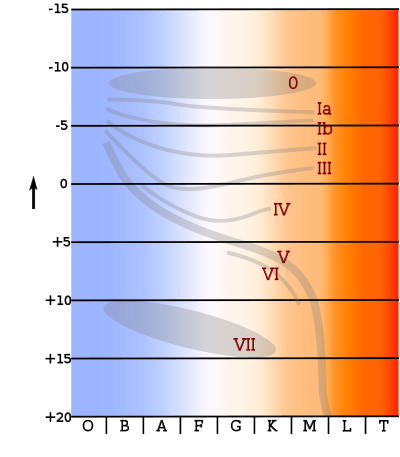- Subgiant
-
This article is about the type of star. For the dance group, see Subgiant (band).Subgiants
A subgiant star is a star that is slightly brighter than a normal main-sequence (dwarf) star of the same spectral class, but not as bright as true giant stars. Although certain subgiants appear to be simply unusually bright metal-rich hydrogen-fusing stars (in the same way subdwarfs are unusually dim metal-poor hydrogen-fusing stars), they are generally believed to be stars that are ceasing or have already ceased fusing hydrogen in their cores. In stars of roughly a solar mass, this causes the core to contract, which increases the star's central temperature enough to move hydrogen fusion into a shell surrounding the core. This swells the star on the way to becoming a true giant. At the start of the subgiant phase (such as a star like Procyon A) the diameter and brightness have increased, but the star has yet to cool down or change color significantly. Later subgiants that are closer to becoming true giants have larger diameters and lower temperature than stars of similar mass in the main sequence. Overall luminosity changes little during the subgiant stage, as shown by a more or less horizontal evolution off the immediate main sequence; this feature is prominent in Hertzsprung-Russell diagrams of globular clusters, as the lateral extension after the turnoff point but before the "ascent" to red giant status.[1][not in citation given]
Many subgiants are rich in metals, and commonly host orbiting planets.[citation needed] Partly for these reasons, and also because the subgiant phase can last up to a few billion years, subgiants are the only type of stars other than main-sequence stars believed capable of hosting life-bearing planets. In Yerkes spectral classification their luminosity class is IV.

This subgiant star-related article is a stub. You can help Wikipedia by expanding it.

